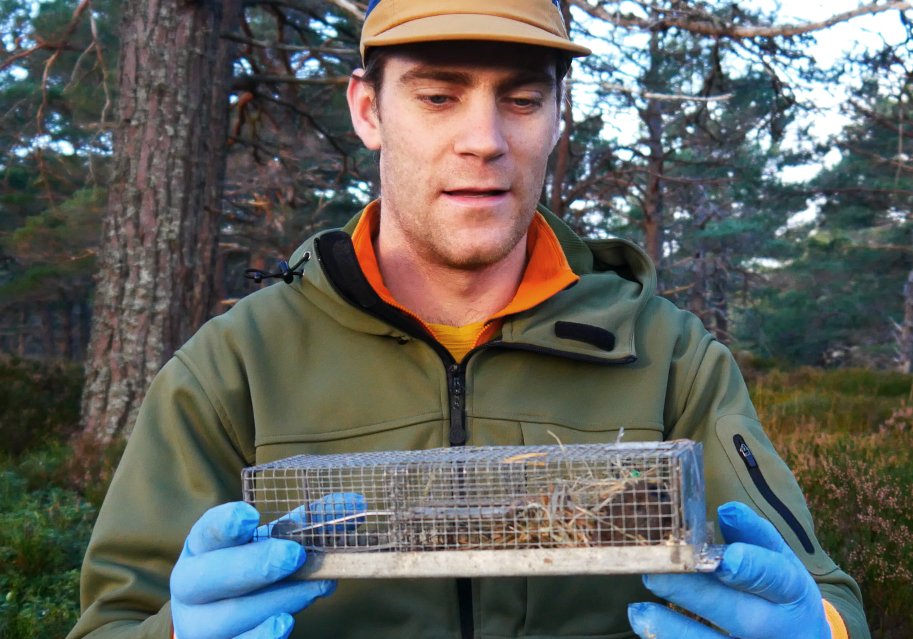

Douglas Carchrie, a local conservationist, writes about his work surveying the Vole population within the Cairngorms Connect landscape.
Vole surveying for the Cairngorms Connect Predator Project takes place twice a year, once in the spring and again in the autumn. Surveying one of the smallest and often overlooked mammals our landscapes helps build a picture of the prey available to predator species like Foxes, Pine Marten, and Wildcats. But also, for raptor species like Hen Harriers, Tawny Owls, and Buzzards. Voles are cyclic species, meaning they go through annual periods of abundance and then become scarce.
An area of Tufted hair grass, prime habitat for Field Voles. Photo: Douglas Carchrie
Cristian Navarro, one of the scientists on the Cairngorms Connect Predator Project, explains "Surveying Voles helps build a picture of the state of the ecosystem. Predator species rely heavily – sometimes exclusively – on these small mammals. As such, the abundance of such prey determines their survival, possible number of offspring, and use of the landscape.
Interestingly, Voles are cyclic species, meaning they go through big fluctuations in their numbers every 3–5 years, building high population densities over several years to then crash down and become scarce. This is how Voles can affect the state of the ecosystem."
There are two separate components, Field Vole surveying and Bank Vole trapping. Field Voles are surveyed by looking through tufted hair grass for droppings, grass clippings, and runs made by the Voles. This autumn most of the droppings and grass clippings were old indicating fewer Field Vole numbers. Spotting a tiny pile of shiny dark green droppings, or a stack of fresh grass clippings always put a smile on my face, knowing there were still a few Field Voles around. Poo is more important than you might think!
Surveying for Bank Voles is a little more involved. The Voles are trapped and released using specially designed live traps. These traps are set on a Friday and baited with plenty of oats and carrots and left open over the weekend. So, any Bank Voles in the area get used to the traps and know there’s food available.
On Monday the traps are refilled with oats and carrots, and we add some hay to keep any Voles that find their way into the traps warm. A few mealworms are also added in case any Shrews make their way into the traps and can’t find their way out via the Shrew hole.
 Douglas Carchrie with a live trap for Bank Voles. Photo: Douglas Carchrie
Douglas Carchrie with a live trap for Bank Voles. Photo: Douglas Carchrie
For the rest of the week, the traps are checked daily; they are never left over twenty-four hours without being checked. When a Vole is caught, we check whether it’s male or female and whether it's breeding, weigh it, check for ticks, and give its fur a tiny trim with some tiny scissors. This little trim lets us see if we catch the same Vole again.
Some Voles return to the trap four times within the week! Perhaps lured by the promise of free food and a warm bed for the night, I’m not sure they do it for the free haircut.
After carefully handling the Voles, they are released on the ground. Most choose to scurry off into the Blaeberry, some take their time and saunter off without a care, and occasionally, one decides that climbing up my arm and into my warm jacket hood is the best escape route!
It’s been a pleasure to get to know the Cairngorms Connect Vole population a little better.
– Douglas Carchrie
Conservationists in Scotland have kicked off a unique four-month ‘Easter egg hunt’ involving one of the UK’s rarest and most beautiful moths.
Five years of raptor data has been published by WildLand Cairngorms in a new report showing the positive impact of ecological restoration work.